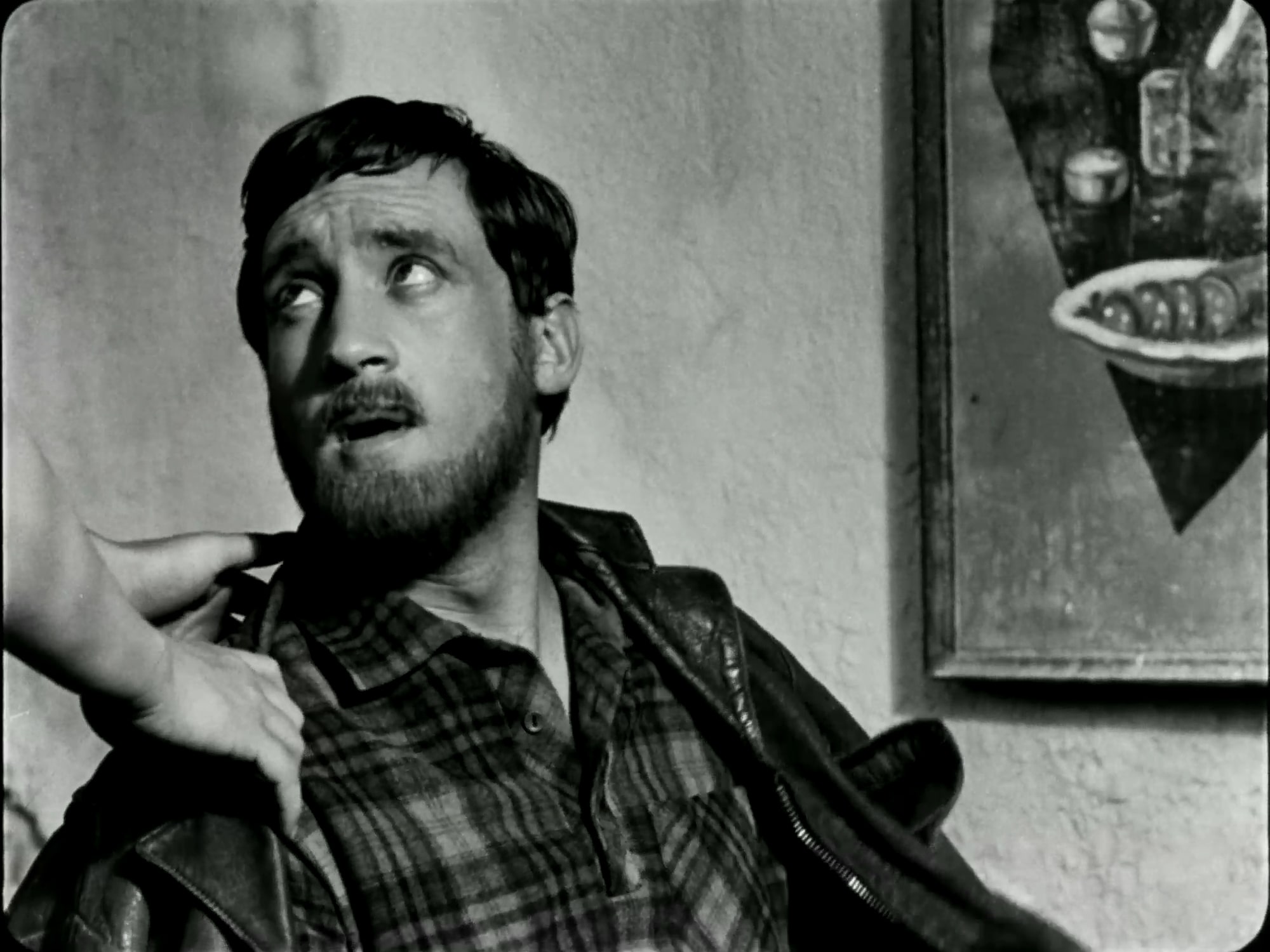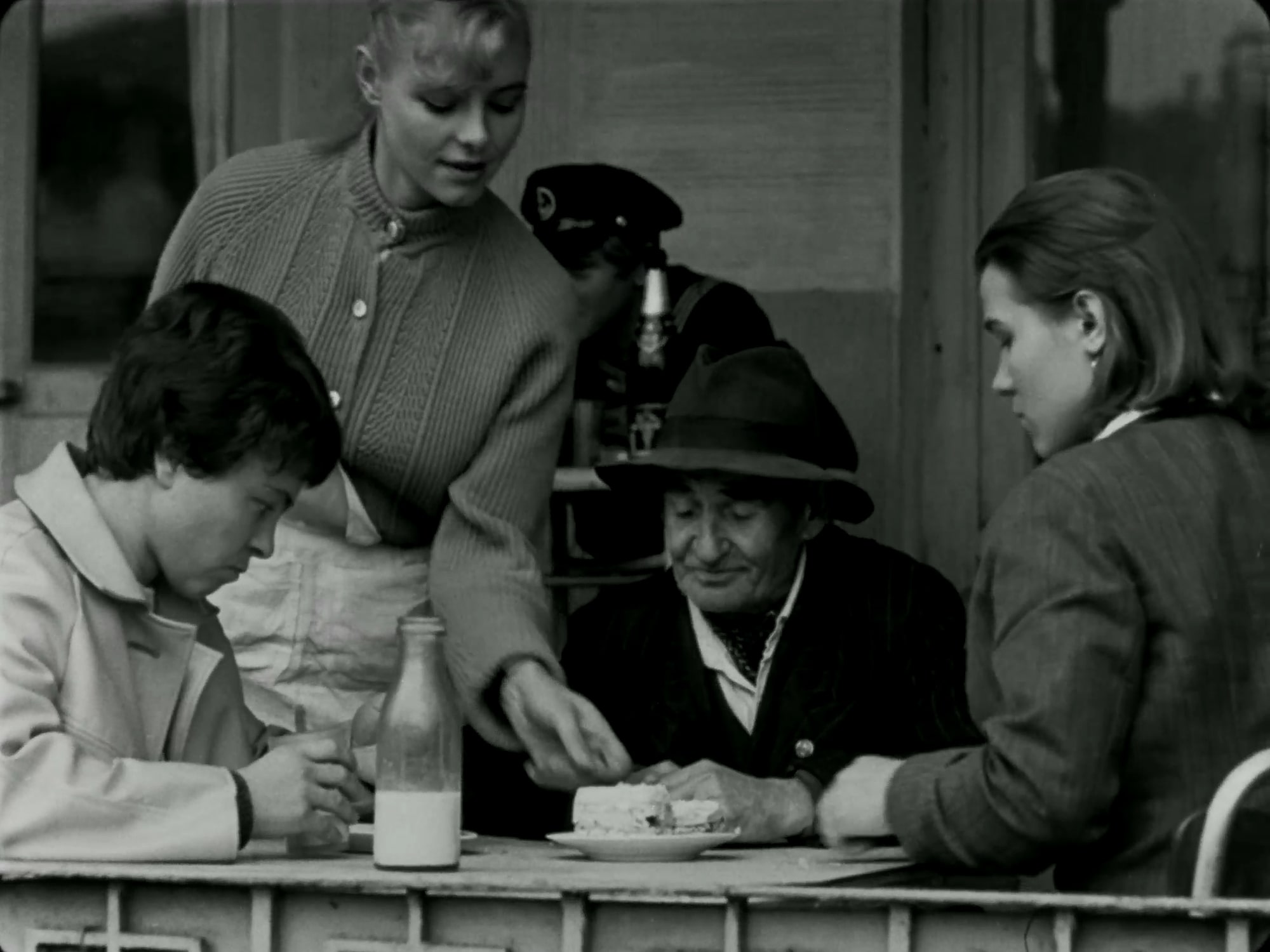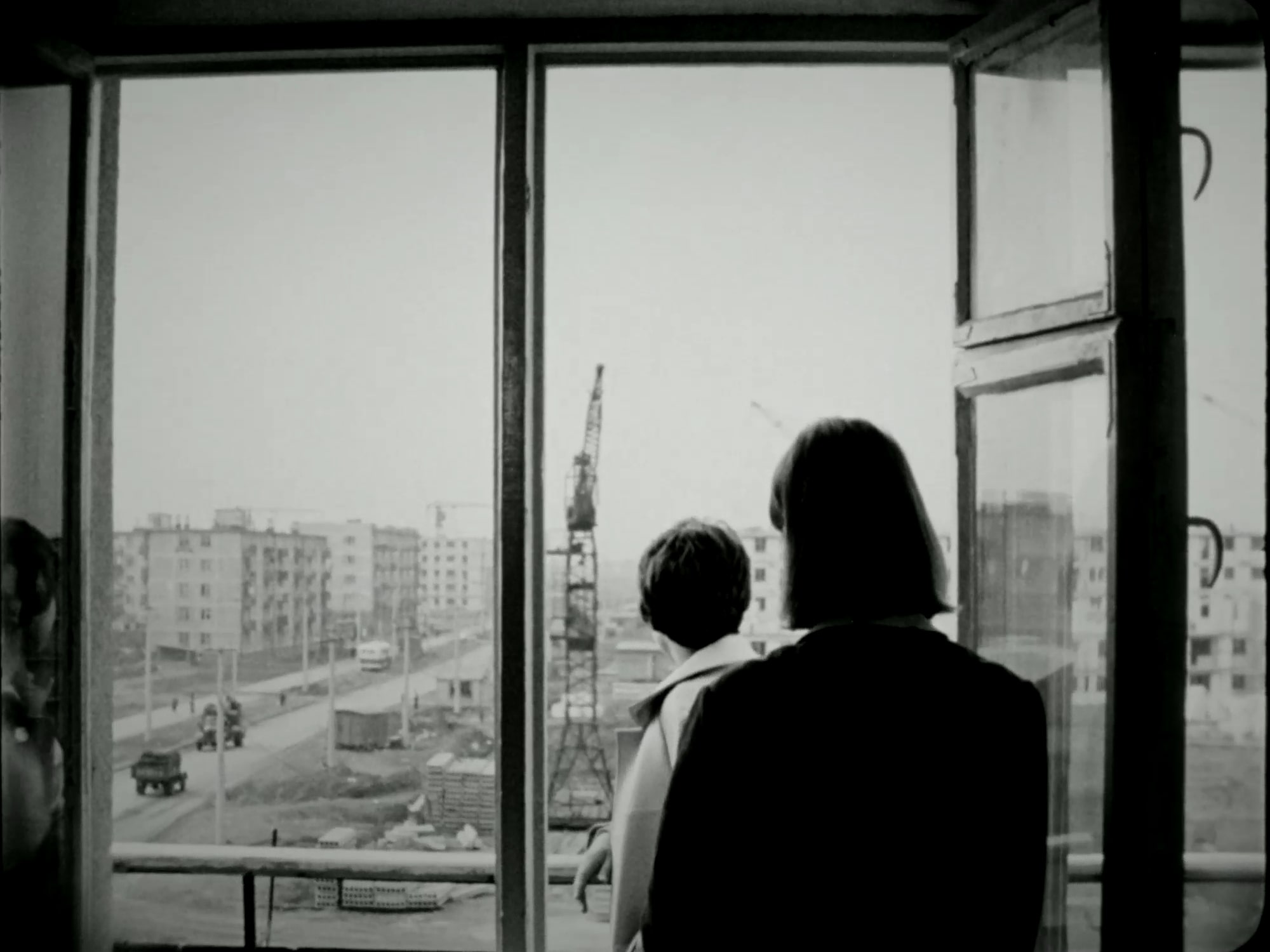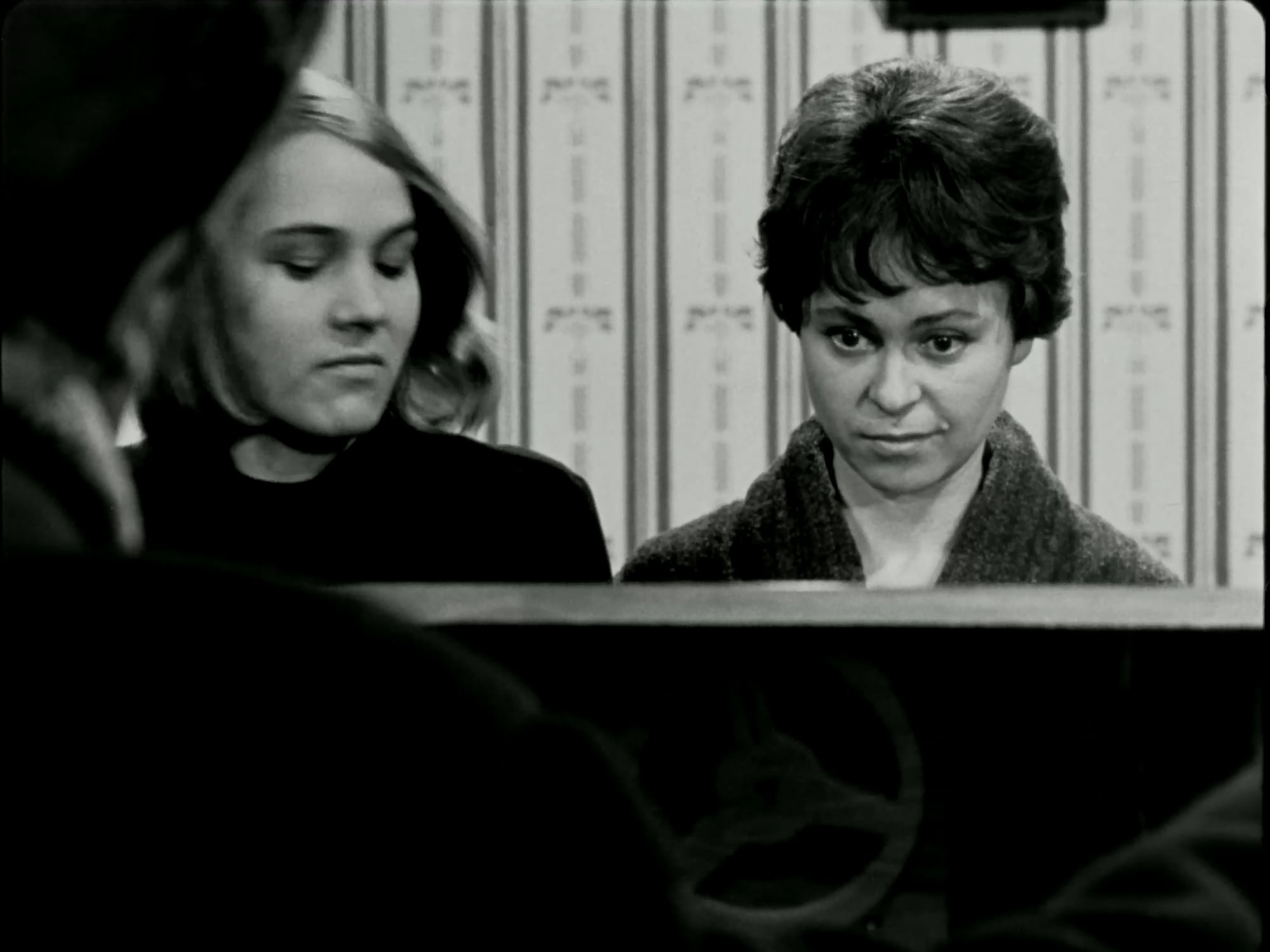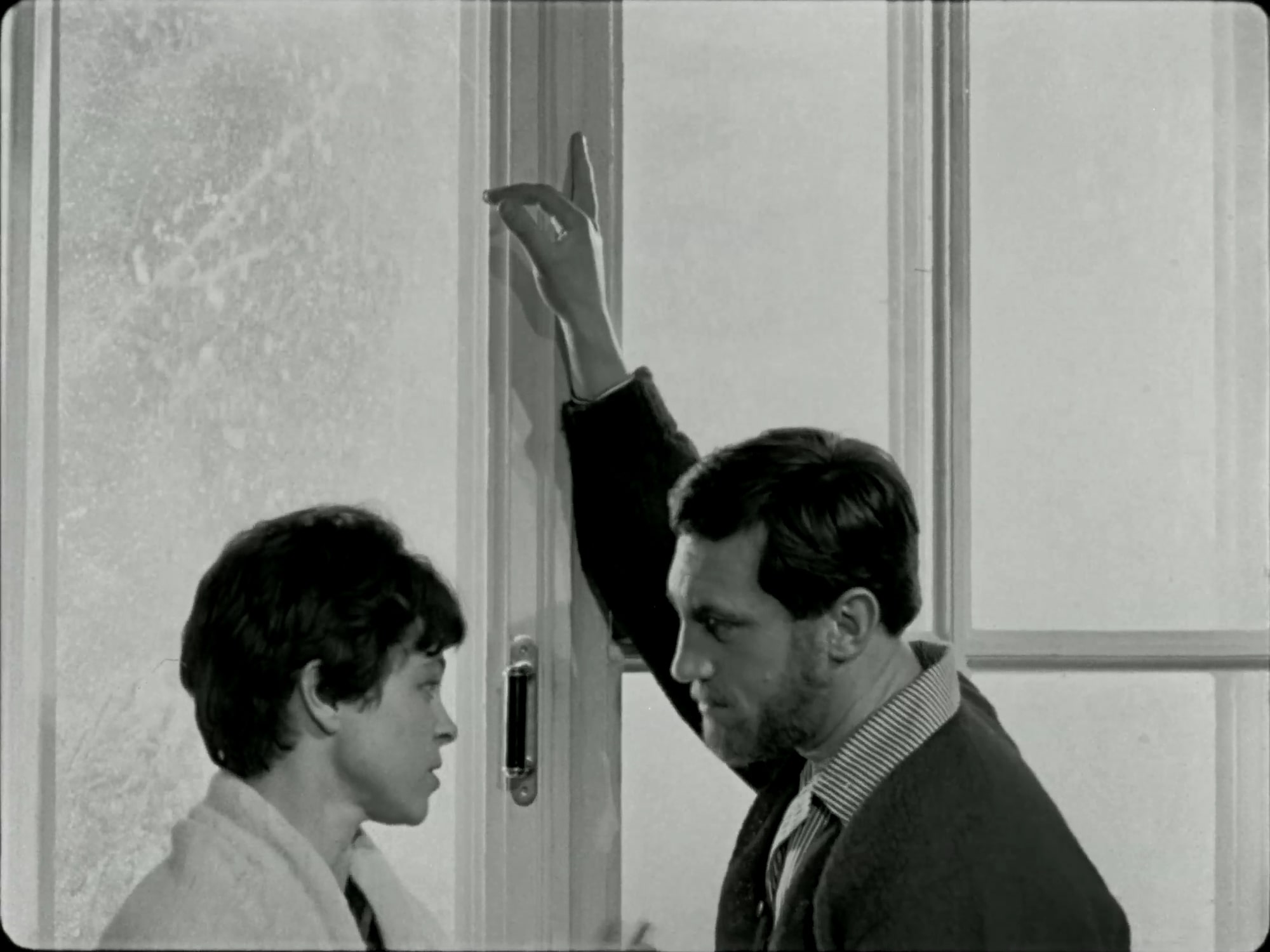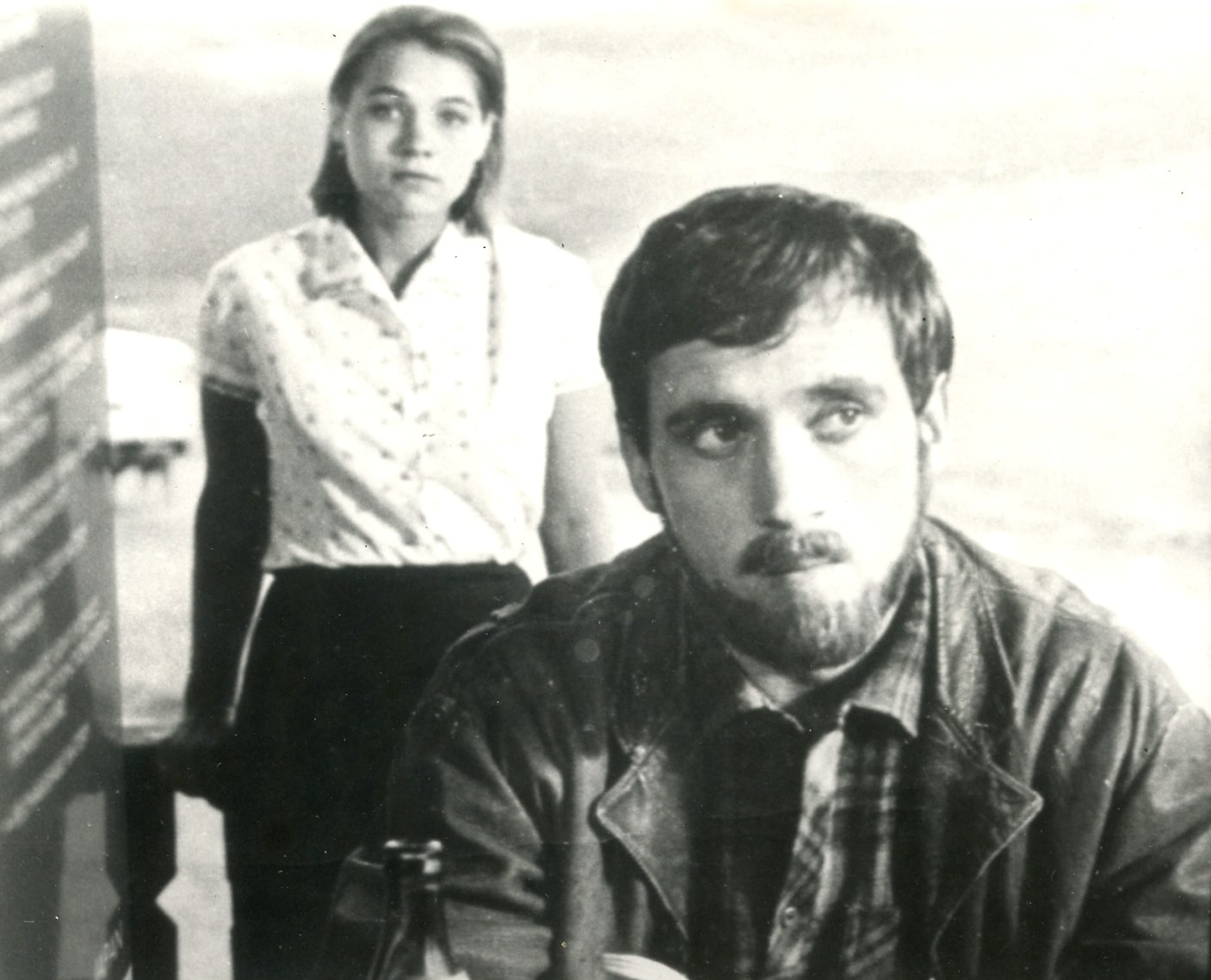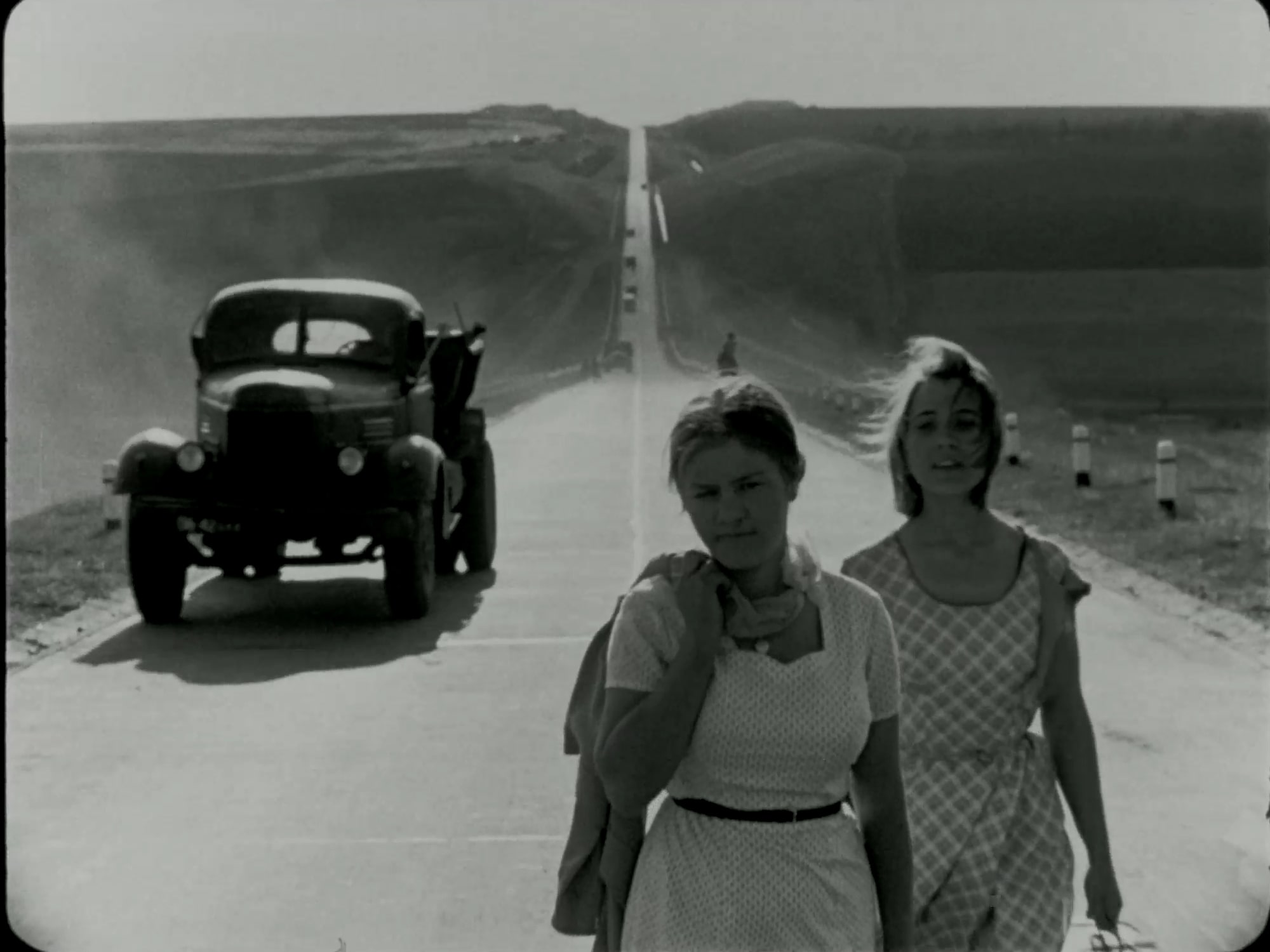
Brief Encounters / Korotki zustrichi
1967
Ukrainian SSR
Odessa Film Studio
96 min
Kira Muratova
Leonid Zhukhovytskyi, Kira Muratova
Hennadii Kariuk
Nina Ruslanova, Vladimir Vysotskii, Kira Muratova, Lidiia Bazylska, Olga Viklandt, Aleksei Glazyrin
Muratova transformed her debut film about the lack of running water in Odesa apartment buildings into a subtle psychological exploration of the character of three completely different people. At the center of the plot is the city clerk Valentyna (Kira Muratova). She attends work meetings and inspects new buildings for the presence of running water. This bookish woman moves like an automaton through her daily mundane troubles.
On her birthday, she meets a man who lives a “gypsy lifestyle” — a geologist and bard named Maksym (played by Vladimir Vysotskii). They fall in love, sensing that each has something that the other is missing — however it is precisely these things that they cannot accept in each other. Valentyna cannot accept his nomadic lifestyle, and Maksym cannot accept her materialism.
One evening, a young woman from the countryside, Nadia (Nina Ruslanova), appears on Valentyna’s doorstep. Valentyna takes in the girl as a housekeeper, not knowing that the young woman is in love with Maksym — and even had a relationship with him.
This is the debut role for Nina Ruslanova, who at the time was still a college student; Kira Muratova personally petitioned for permission for Nina to be cast. Muratova herself was not going to star in her own film, but when the leading actress refused to continue her involvement, the film crew asked Muratova to take on the role herself as they were impressed with her acting performances.
During filming, Vladimir Vysotskii formed his characteristic singing style — a forced voice with an emphasized hoarseness.
Already in this film one can recognize the odd characters, bizarre monologues, various idiosyncrasies and theatrical dialogues that became typical of Muratova’s work — but here they are still on the periphery of the main storyline.
The film could almost be seen as an ordinary Soviet romance describing the clash of the urban and rural ways of life, if not with a few peculiarities. And it is precisely these “peculiarities” — non-linear editing, “strange” relationships between the characters, free-thinking poetic interludes, and an overload of aesthetic techniques — why the film was given the lowest distribution category and not shown almost anywhere for 20 years.

